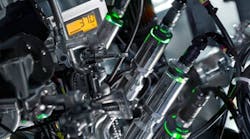Personalized medicine plays a central role in delivering better patient outcomes and provides the long-term promise to treat and potentially cure a broad range of conditions. In recent years, there has been an increase in research and development of these advanced therapy medicinal products, a broad category that includes cell and gene therapies and RNA therapeutics.
However, the processing equipment used in cell therapy (CT) manufacturing originates in research labs where it was intended for single use or individual process steps. It was not designed with commercial manufacturing in mind.
Pharma manufacturers and solutions providers need to work in partnership to respond to manufacturing challenges with fresh thinking that puts a focus on automated and integrated solutions, supported by a flexible approach to facility design.
Impact on facility design
The main approaches adopted for CT manufacturing are ‘all in one,’ which uses a single and almost fully-automated piece of equipment for the whole process, and modular, where an individual piece of equipment is used for each step. Both approaches have advantages and drawbacks: The former can lack flexibility, while the latter equates to manual, open processing, which increases contamination risk.
At the same time, CT manufacturers face data challenges, including integration, quality, management, complexity and interoperability; for example when connecting different machines and equipment during the processing phase. Additionally, there is a need for equipment to connect to wider manufacturing systems within the supply chain.
CT manufacturing requires sterile manufacturing as the processes do not include terminal sterilization via sterile filtration and not all process operations are closed. Manufacturing also requires high containment levels. The product maintains the same biosafety classification throughout, which is important due to the broad utilization of viral vectors in processing. When new process steps are added, it is necessary to assess biosafety levels and understand the overall risk to the facility.
These challenges impact facility design and cost — at the same time, manufacturers must ensure facilities meet regulatory requirements.
Reimagining manufacturing
New developments in equipment and technology, coupled with fresh and innovative thinking, are powering progress in CT manufacturing. Strategies that rethink the overall process and reimagine how different manufacturing steps work are at the heart of addressing challenges.
This thinking involves merging different machines, reducing the need for the human-machine interface, reducing the number of batches run — especially in R&D — and intensifying the process operations space.
Best practice in the automation of processing equipment focuses on: 1) combining different steps in a smaller number of machines to reduce the number of open steps and, ultimately, shortening the time needed to move product from A to B; 2) deploying flexible processing equipment to allow manufacturers to change the process without the need to alter the setup.
Emerging digital solutions will also play a role and will support the implementation of automation strategies around product analysis, decontamination, biosafety and processing. To improve and streamline production, an increasing number of sensors are being integrated in manufacturing equipment. This approach allows data to be extracted from a myriad of sources across the manufacturing landscape.
A flexible approach to planning facilities is vital for categorizing viral vectors at the appropriate biosafety and containment levels. Flexibility will also ensure that biosafety levels and the overall risk to the facility are assessed if new process steps are added. From a regulatory perspective, FDA and the EU’s Annex 1 guidelines deem flexibility acceptable.
Requirements are subject to change, as developers often work on different therapy modalities with different approaches and processes as well as different needs for scale-up/scale-out to meet demand.
The growing success and effort in the development of CT provides a significant opportunity to achieve improved patient outcomes and the long-term potential to eliminate serious diseases.






